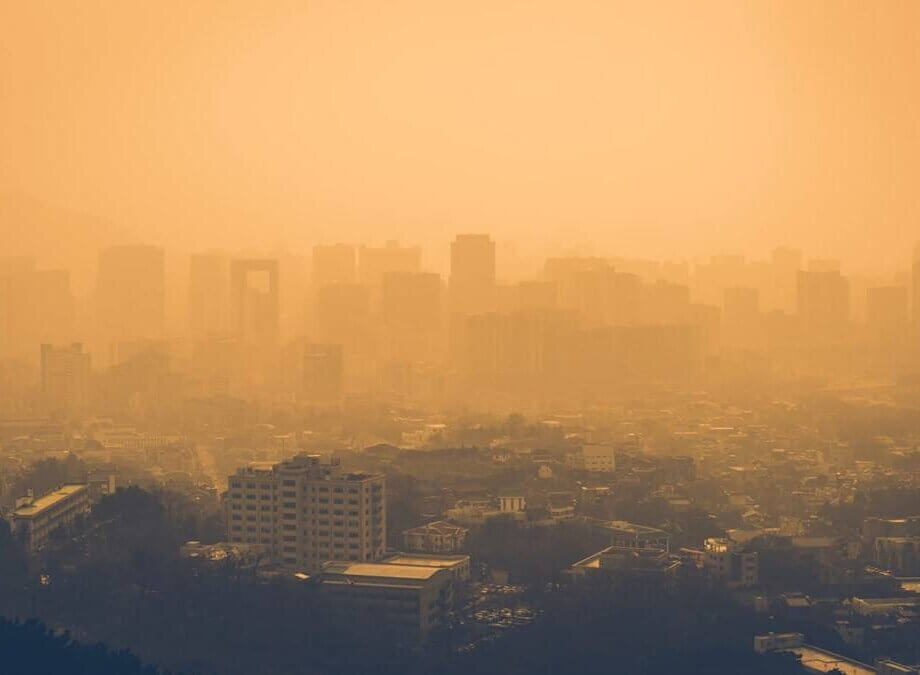Understanding Ozone Pollution: A Double-Edged Sword
Ozone is a molecule that plays a paradoxical role in our environment. High above the Earth, in the stratosphere, the ozone layer acts as a protective shield, absorbing harmful ultraviolet (UV) radiation from the sun. However, at ground level, ozone becomes a dangerous air pollutant and a potent greenhouse gas. Exposure to ground-level ozone can worsen respiratory and cardiovascular diseases, trigger asthma attacks, and even lead to premature death, especially among vulnerable populations such as children, the elderly, and those with pre-existing health conditions.
- Understanding Ozone Pollution: A Double-Edged Sword
- Ozone Pollution in Southeast Asia: The Scale of the Problem
- How Ozone Forms: The Role of NOx and VOCs
- Health Impacts: The Human Cost of Ozone Pollution
- Projecting the Future: Scenarios for Ozone and Health in 2050
- Key Sources of Ozone Precursors in Southeast Asia
- Policy Solutions: What Can Be Done?
- Challenges and Opportunities: The Road Ahead
- Case Studies: Successes and Lessons Learned
- Looking Forward: Research and Policy Priorities
- In Summary
Ground-level ozone is not emitted directly into the air. Instead, it forms when nitrogen oxides (NOx) and volatile organic compounds (VOCs) react in the presence of sunlight. In Southeast Asia, rapid economic development has led to increased emissions of these ozone precursors from vehicles, factories, power plants, and even natural sources like vegetation. The region’s tropical climate, with abundant sunlight and high temperatures, further accelerates ozone formation, making the problem particularly acute.
Ozone Pollution in Southeast Asia: The Scale of the Problem
Southeast Asia is home to over 600 million people, many of whom live in rapidly growing urban centers. According to the World Health Organization (WHO), more than 90% of the region’s population breathes air that fails to meet international safety standards. Ozone, along with fine particulate matter (PM2.5), is a major contributor to this public health crisis. In 2018 alone, pollution from ozone and PM2.5 was estimated to have caused nearly 900,000 premature deaths in Southeast Asia.
Recent research led by Nanyang Technological University (NTU) in Singapore has brought new urgency to the issue. Using advanced computer models and international emissions data, scientists projected future ozone levels in Southeast Asia under various scenarios. Their findings reveal that, without decisive action, ozone pollution will continue to pose a severe threat to public health across the region.
Dechen Tsering, regional director of the United Nations Environment Programme (UNEP) for Asia and the Pacific, emphasizes the gravity of the situation:
“Air pollution is one of the greatest health threats facing this region right now. But the good news is that it’s not an impossible problem to solve. We know how to reduce air pollution – we just need to act.”
How Ozone Forms: The Role of NOx and VOCs
To understand how to reduce ozone pollution, it’s important to grasp the chemistry behind its formation. Ozone at ground level is created when NOx (mainly from burning fossil fuels in vehicles, power plants, and industry) and VOCs (from both human activities and natural sources like plants) react in sunlight. The process is complex and highly sensitive to local conditions, including temperature, humidity, and the relative concentrations of NOx and VOCs.
In urban areas such as Singapore, Jakarta, Kuala Lumpur, Bangkok, and Ho Chi Minh City, both NOx and VOCs contribute significantly to ozone formation. This means that effective ozone reduction strategies in cities must target both types of emissions. In contrast, in rural and coastal regions, ozone formation is more strongly influenced by NOx levels, so targeted NOx reductions are likely to be more effective in these areas.
Associate Professor Steve Yim of NTU Singapore, lead author of the recent study, explains the challenge:
“Ozone reduction is not straightforward, as it requires careful regulation of its precursors – nitrogen oxides and volatile organic compounds – rather than direct removal from the atmosphere. The tropical conditions in Southeast Asia also make ozone formation different from that in other parts of the world.”
Health Impacts: The Human Cost of Ozone Pollution
Ozone is a powerful respiratory irritant. Short-term exposure can cause coughing, throat irritation, and chest pain, while long-term exposure increases the risk of chronic respiratory diseases, heart disease, and premature death. Children, the elderly, and people with asthma or other lung conditions are especially vulnerable.
According to the WHO, outdoor air pollution, including ozone, is responsible for millions of premature deaths worldwide each year. In Southeast Asia, the burden is particularly heavy, with the region experiencing some of the highest rates of air pollution-related mortality globally. The Health Effects Institute estimates that in 2021, over 3.4 million deaths in Asia were attributable to air pollution, with Southeast Asia accounting for a significant share.
Joseph Sung, distinguished university professor at NTU Singapore and co-author of the ozone study, underscores the importance of action:
“Ozone is an invisible yet harmful pollutant. Our study shows that by taking decisive steps now, we can significantly reduce the region’s health burden and improve air quality. This research reinforces the vital role of air quality management in protecting public health.”
Projecting the Future: Scenarios for Ozone and Health in 2050
The NTU-led research team modeled several possible futures for ozone pollution in Southeast Asia, each based on different assumptions about economic growth, energy use, and pollution control policies. Their key findings include:
- Business-as-usual scenario: If current policies and planned NOx reductions from power plants, factories, and transport are implemented, annual ozone-related premature deaths could drop by 22,000 by 2050.
- Stringent emissions control scenario: If countries adopt more aggressive measures to cut emissions, up to 36,000 premature deaths could be avoided each year by 2050.
- High-emission scenario: If fossil fuel consumption continues to rise unchecked, annual ozone-related premature deaths could increase by 33,000 by 2050.
Most of the health benefits from ozone reduction would be realized in Indonesia, the Philippines, Vietnam, and Thailand – countries with large populations and rapidly growing economies.
Key Sources of Ozone Precursors in Southeast Asia
Understanding where ozone precursors come from is essential for designing effective policies. The main sources include:
- Transport: Motor vehicles are a major source of NOx emissions in urban areas. Old vehicles, lack of emission standards, and rapid urbanization have exacerbated the problem.
- Industry and Power Generation: Factories and power plants burning fossil fuels emit large amounts of NOx and VOCs.
- Biomass Burning: Agricultural fires and forest clearance, often used for land management, release significant quantities of both NOx and VOCs. These fires are a major seasonal contributor to air pollution in the region.
- Natural Sources: The tropical climate means that plants emit high levels of natural VOCs, which, when combined with human-made NOx, can drive ozone formation.
Research published in EOS highlights that eliminating vegetation and forest fires could reduce ozone exposure by 9% in mainland Southeast Asia and prevent tens of thousands of premature deaths annually.
Policy Solutions: What Can Be Done?
Reducing ozone pollution requires a multi-pronged approach targeting both NOx and VOC emissions. The following strategies have been identified as particularly effective for Southeast Asia:
- Stricter Emission Standards: Implementing and enforcing tighter emission controls for vehicles, power plants, and industrial facilities can significantly reduce NOx and VOC emissions.
- Clean Transportation: Promoting electric vehicles, expanding public transit, and developing bike lanes can reduce reliance on polluting vehicles. Cities like Manila, Bangkok, and Jakarta are already piloting such initiatives.
- Controlling Biomass Burning: Preventing agricultural and forest fires, and promoting alternative land management practices, can dramatically cut emissions of ozone precursors.
- Air Quality Monitoring and Early Warning Systems: Investing in reliable air quality data and public alert systems helps people avoid exposure during pollution peaks and supports better policy decisions.
- Public Health Interventions: Establishing air pollution clinics, as seen in Bangkok, provides treatment and education for those affected by pollution-related illnesses.
- Regional Cooperation: Ozone and other pollutants often cross national borders. Collaborative frameworks are needed to address transboundary pollution and share best practices.
The United Nations Environment Programme (UNEP) and the World Health Organization (WHO) both advocate for integrated policies that address air pollution, climate change, and public health together. Investments in renewable energy, improved waste management, and cleaner household fuels not only reduce air pollution but also support economic growth and climate resilience.
Challenges and Opportunities: The Road Ahead
While the science is clear, implementing effective ozone reduction policies in Southeast Asia faces several challenges:
- Economic Growth vs. Environmental Protection: Rapid industrialization and urbanization drive economic development but also increase emissions. Balancing growth with sustainability is a persistent challenge.
- Informal Sector and Occupational Exposure: Many workers in Southeast Asia are exposed to high levels of air pollution in informal workplaces, with limited access to healthcare or protective measures. Addressing occupational exposure requires targeted policies and greater awareness.
- Public Awareness: Many people are unaware of the health risks posed by ozone and other pollutants, reducing public demand for action and compliance with regulations.
- Data and Monitoring: Reliable, real-time air quality data is still lacking in many parts of the region, making it difficult to design and enforce effective policies.
Despite these obstacles, the potential benefits of action are enormous. UNEP estimates that reducing air pollution could save hundreds of thousands of lives and billions of dollars in healthcare costs across Southeast Asia by 2030. Cleaner air would also boost productivity, support sustainable development, and help mitigate climate change.
Case Studies: Successes and Lessons Learned
Several Southeast Asian countries have begun to implement policies aimed at reducing air pollution, with promising results:
- Indonesia: By investing in renewable energy and imposing stricter vehicle emission standards, Indonesia could reduce its greenhouse gas emissions by 650 megatonnes – equivalent to taking 130 million cars off the road.
- Thailand: The cost of implementing clean air strategies is estimated at US$4 billion annually by 2030, but the cost of inaction would be three times higher due to healthcare expenses and lost productivity.
- Regional Initiatives: The Asia Pacific Regional Forum on Health and the Environment, co-hosted by UNEP and WHO, fosters cooperation between health and environment sectors to address air pollution and other environmental health issues.
Philanthropic organizations and international donors are also supporting pilot projects, policy advocacy, and knowledge-sharing networks to accelerate progress.
Looking Forward: Research and Policy Priorities
The NTU research team plans to expand their work to explore how climate change and land-use patterns may further influence ozone pollution in Southeast Asia. As global temperatures rise, ozone formation is expected to increase, making mitigation efforts even more urgent. Collaboration with policymakers, industry stakeholders, and environmental organizations will be essential to design and implement sustainable air quality management strategies.
Pallavi Pant, Head of Global Initiatives at the Health Effects Institute, calls for bold investment:
“Bold investment is needed to strengthen technical capabilities and to bolster the data and technology infrastructure at local and regional scales.”
In Summary
- Ground-level ozone is a major health threat in Southeast Asia, causing respiratory and cardiovascular diseases and premature deaths.
- Ozone forms when NOx and VOCs react in sunlight, with emissions from vehicles, industry, power plants, and biomass burning as key sources.
- Recent research shows that with stringent emission controls, up to 36,000 ozone-related premature deaths could be prevented annually by 2050 in Southeast Asia.
- Effective strategies include stricter emission standards, clean transportation, controlling biomass burning, improved air quality monitoring, and regional cooperation.
- Challenges remain, including balancing economic growth with environmental protection, addressing occupational exposure, and improving public awareness and data collection.
- Investing in clean air policies offers significant health, economic, and climate benefits for the region.




